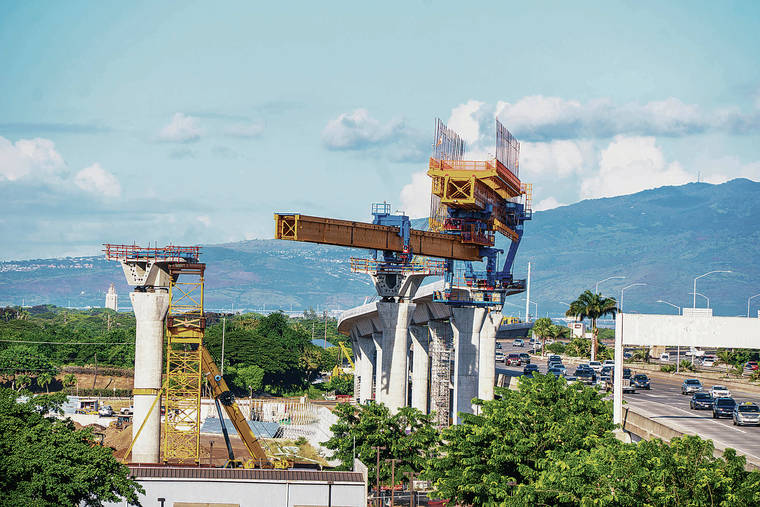Without the fanfare of past similar votes, the Honolulu City Council and Mayor Kirk Caldwell signed off on a bill clearing the way for the city to spend up to $214 million in taxpayer dollars for the over-budget $9.2 billion East Kapolei-to-Ala Moana rail project.
Bill 42 Opens in a new tab allows the city to spend a maximum of $26 million annually — up to
$214 million in all — through the sale of bonds that would be repaid from the general fund, which gets most of its dollars from property taxes. The Council on Wednesday passed the bill 5-2 with members Carol Fukunaga and Ann Kobayashi voting “no” and Tommy Waters voting “yes with reservations.” Council Chairman Ikaika Anderson and Councilwoman Heidi Tsuneyoshi did not
attend the meeting.
Caldwell then signed the bill Thursday, even though he had until Nov. 22 to act on the measure.
While Honolulu Authority for Rapid Transportation officials had said their projections did not show them needing the money from general city coffers, the Federal Transit Administration insisted the city make the commitment to pay a “subsidy.” The FTA has been holding onto about half of a promised $1.55 billion for the project after the price tag jumped from $5.2 billion, and last year demanded the money commitment and a recovery plan to show how the city intended to fund the remainder of the 20-mile, 21-station line guideway.
The Council, at the end of October 2018, adopted a similar proposal Opens in a new tab amid uproar from rail opponents who argued that city officials should have stuck to a previous promise to not use taxpayer dollars for rail construction. City officials said they could not risk
losing part or all of the $1.55 billion.
Ordinance 18-39 Opens in a new tab, the 2018 proposal, allowed the first $44 million of the $214 million to be transferred to HART. The vote then was 7-2, with Kobayashi joined by former Councilman Trevor Ozawa, Waters’ predecessor, voting “no.”
But the language in that earlier measure referred specifically to a HART draft recovery plan dated Oct. 24, 2018, that was submitted to the FTA, which
subsequently asked the
Honolulu agency for an updated plan.
The updated plan was approved in September, but the money has yet to be released by the FTA.
The bill approved last week makes no reference to a specific recovery plan, but a generic one “that maybe revised and updated, and which may be adopted by the Council,” city Budget Director Nelson Koyanagi pointed out to Council members.
Community advocate Natalie Iwasa was among the few people who testified against the bill last week.
“We were told city taxes would not be used to fund rail,” Iwasa said in an email Monday. “Then we were told the city would have to cover $214 million, with $44 million up front. We were also told the rest of the city subsidy would come years later, at the end of the project. Bill 42, however, moves up the funding requirements to provide the money annually.”
Additionally, “these funds cover HART’s operating expenses, but we’re incurring additional financing costs because we’re paying them off over the long-term of
10-24 years,” Iwasa said. “That’s just not good
policy.”
Meanwhile, the Council Budget Committee on Wednesday is scheduled to hear Resolution 19-286 Opens in a new tab, amending the original agreement allowing the city to issue bonds on behalf of HART.

